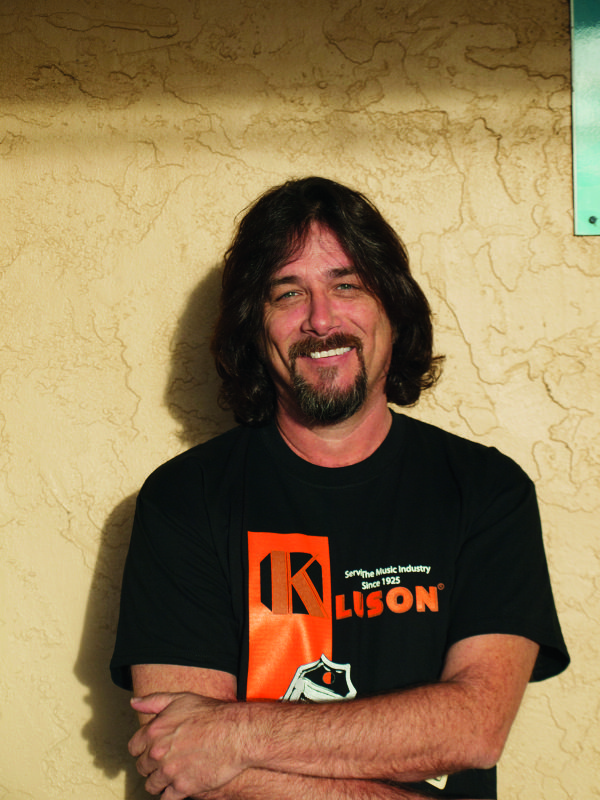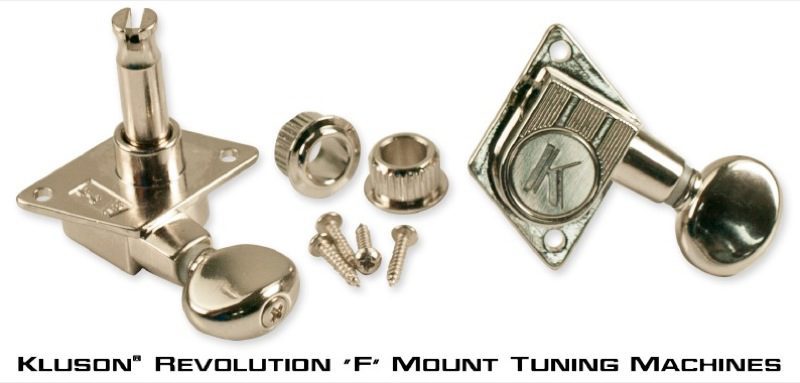
Under the stewardship of WD Music since Larry Davis acquired the brand in 1994, Kluson is celebrating its 90th anniversary in 2015 and MMR caught up with Dave Lewis, head of sales and product development, to discuss the brand’s storied past, active present-day operations, and plans for the future.
MMR: Can you talk a little bit about Kluson’s beginnings?
Dave Lewis: Kluson Manufacturing was formed in 1925 by John Kluson in Chicago. Originally a machine shop, they found a niche with the musical instrument market providing their manufactured parts including tuning machines, tailpieces and other metal components.
How did Kluson come to be associated with such iconic brands such as Gibson, Martin, Fender, et cetera?
When the demand for guitars increased due to popular music, builders began making musical instruments to meet demand opening the door for advanced orders. Kluson along with other manufacturers began supplying the major instrument builders eventually becoming “go to” suppliers. Some early Kluson parts didn’t have any branding on them but this was added and seeing the different variations of Kluson parts, one can see how branding became more focused. An example would be the stamped steel tuners with the dust cover. Originally there was a plain line vertically down the center of the housing. This changed to the single line version saying “Kluson Deluxe” in approximately 1956 to eventually bearing bold stamp in two lines in the mid 1960’s. While companies like Gretsch, Gibson, Fender, and C.F. Martin were trying to put instruments in famous artist’s hands, many of them also bore the Kluson brand on the tuners.
How did WD acquire Kluson? What was behind that evolution?
The Kluson brand was acquired by Larry Davis of WD Music Products in 1994. The original Kluson Manufacturing Company closed its doors sometime in the early 1980s with very little historic information other than a few old catalogs left to work from. Larry Davis set a goal of attempting to faithfully reproduce the original tuners. After much research it was found that to reproduce the originals without some redesigning to add both durability and modern features such as a higher gear ratio and stronger components would only serve the purpose of the replacement market. Larry’s vision was always to put Kluson back in the game to be competitive with other manufacturers in the OEM market. Initially the task was daunting because Kluson’s catalog was extremely large plus had almost 60 years of designs and changes. Both the collector market and restoration services kept demanding different variations to cover the replacement market that it took the better part of two decades before the thought of moving into new production designs would take place. Relationships were re-established with most of the major instrument builders and Kluson began supplying the iconic stamped steel tuners again for Custom Shop instruments. Instrument buyers noticed immediately correct Kluson tuners being installed on 1950s and 60s era reissues as well as recognizing the improvements. This enabled Kluson to analyze the competition today and start working on designs that would enable Kluson to enter the new instrument market.
How about the present-day operation – how many employees are currently on staff? Can you describe the facilities?

Kluson now resides under the same roof as WD Music Products in North Fort Myers, Florida with manufacturing in both the USA and Korea. The facility has warehouse, production and assembly areas for preparation and packaging and spans approximately 20,000 square feet overall.
While most well known for tuners, Kluson also fields bridges, tailpieces, and more – can you detail the full lineup of product offerings?
Kluson offers several USA and Korean production bridges and tailpieces. The Kluson #9 tailpiece, “Finger” tailpiece and “Harmonica” bridge as well as stamped steel Telecaster bridges, ABR-1, Nashville bridges and Stop-tails are part of the new production. Kluson also offers the original, yet upgraded stamped steel tuner production in many “historically correct” appearances and variations including plate mounted 3 per side and 6 in line tuners, individual 3 per side and 6 in line tuners with multiple plating colors, button options and string posts (including a new twist cap locking stamped steel tuner) plus the new Kluson Supreme tuners. Add in all the recent die-cast designs including the new Revolution Series and Contemporary Series and you have an arsenal of tuning machine options to fit just about every need!
Are there any upcoming or recent product introductions of note you’d like to share with our readers?
In 2012, Kluson began putting their features into common footprints as upgrade designs which offered even higher gear ratios, locking features, and in some cases, plating types that were not available. The focus was on “non-modification required upgrades” and filling gaps where no alternatives were currently available. This “Contemporary Series” included the single screw mount and the discreet two-pin mount used on all Fender USA and Mexico Standard Series instruments. These were designed in locking and non-locking formats and met quite a demand for upgrades. In 2013 Kluson decided to take the design work one step further and start working on both the new Kluson Supreme and the Kluson Revolution tuning machine designs. First, the Kluson Supreme was the vision of where the original Kluson stamped steel tuner would be today. The original design was only a 12:1 ratio and while Kluson changed that in 1994 to 15:1 the quest has always been to make the tuner more stable with finer tuning ability and zero backlash. The new Kluson Supreme accomplishes that and more! By using the original design this non-modification upgrade is for any vintage or reproduction instrument. The same lightweight and ringing tone stamped steel is known for. Second, Kluson aimed to make a brand new tuner design that would take Kluson into the next century. Using a 19:1 high ratio, locking and non-locking formats with a total redesign, Kluson made the first “Revolution Series” tuner set to upgrade the CBS era Fender “F” tuner. This one-piece die-cast design takes performance to a whole new level on a footprint that has never before been duplicated in die-cast. Now adding the Revolution “G Mount” and “H Mount” tuners which duplicate the original Kluson 3 per side and 6 in line footprints but again in one-piece die-cast, Kluson is again setting its sights on the OEM market as well as upgrading current production instruments. The Kluson Supreme and Kluson Revolution tuners will make their debut at the January 2015 NAMM show in Anaheim and are sure to be an attention getter.
With 2015 marking a big milestone for Kluson, are there any special events or promotions planned?
The introduction of the Kluson Supreme and Kluson Revolution tuners will be the opening of the 2015 year with plans for release of the original Kluson Banjo tuner as used by Gibson on Firebird models among others.
What are your expectations for the market in the coming months?
 Kluson expects the demand for parts to continue to rise. Whether they are new builds or replacing/upgrading existing hardware, Kluson is designing each new item with performance and ease of installation as primary focus. The easier we make transition for each and every customer the more positive response to our new designs we receive.
Kluson expects the demand for parts to continue to rise. Whether they are new builds or replacing/upgrading existing hardware, Kluson is designing each new item with performance and ease of installation as primary focus. The easier we make transition for each and every customer the more positive response to our new designs we receive.

























